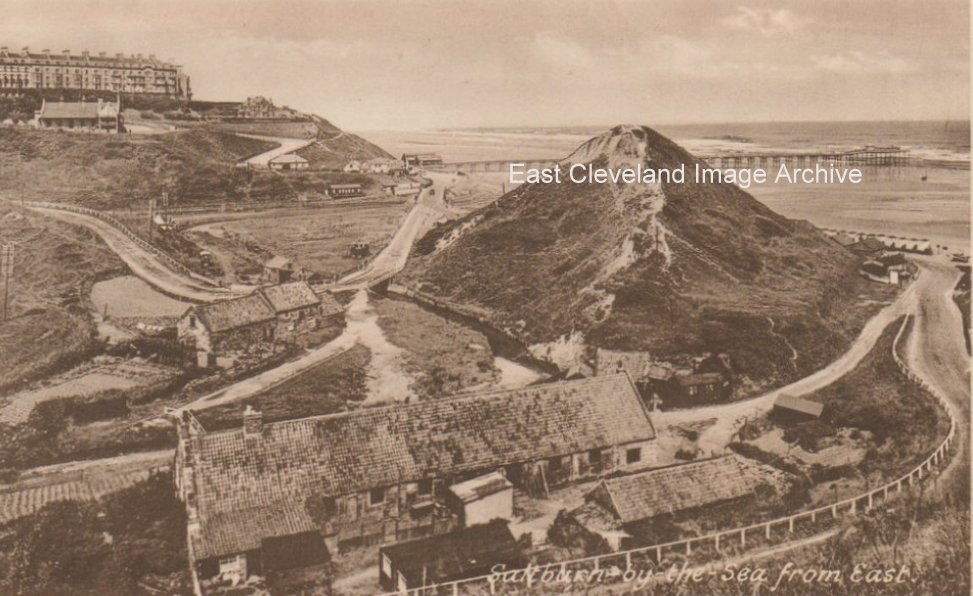
Saltburn Mill House in the foreground still stands, much modernised, to this day, as Callum Duff advises: ”Saltburn Mill was actually situated a few yards up Saltburn Gill to the south of this view. Its millrace ran the length of the valley either following the current footpath or running alongside it. It was demolished around 1920.”. The small buildings behind it are now gone – replaced by the sewage treatment plant. Cat Nab (so named because it looks like a crouching cat) shows the paths from the boot marks of the boots of adventurous Victorians, eager to try the air – the scars are much deeper these days and beyond recovery. Anne Watson adds: “I have an almost identical postcard, with a 1.5d George V stamp. Our family spent many weekends and holidays there, 1930s to 1950s, as my great uncle owned the hut shown under the nab – called Nestleton Cot. The building in the foreground was a farm and as kids around 1950 we used to help the farmer’s dog bring cows in for milking. I think his name was Smith. The track to the field ran between the farm and the beck.” Peter Appleton advises: “The long house in the foreground was, almost certainly, the alum house for the alum works at Selby Hagg, Skelton. The first period of operation, from about 1617 to, perhaps, 1630 saw the alum house located in the quarry (which is located ESE from Hagg Farm and ENE from the Asda roundabout). The alum operation was resumed by Edward Trotter of Skelton Castle, on behalf of his father-in-law, Sir John Lowther, in 1670. In letters written to Sir John, it is explained that the laying of the troughs has begun and will be a very costly exercise. Those troughs, a wooden conduit, ran the entire length of Saltburn Gill, from the quarries to the long house at Cat Nab. That’s almost 2km in length! They operated for about 20-25 years. When John Hall Stevenson resurrected the alum works in 1765, the quarries, troughs and alum house were all refurbished. It is highly likely that the stone walls and probably some of the roof beams will have originally been part of the alum house.“
Many thanks to Callum Duff, Anne Watson and Peter Appleton for the updates.
Recent Comments